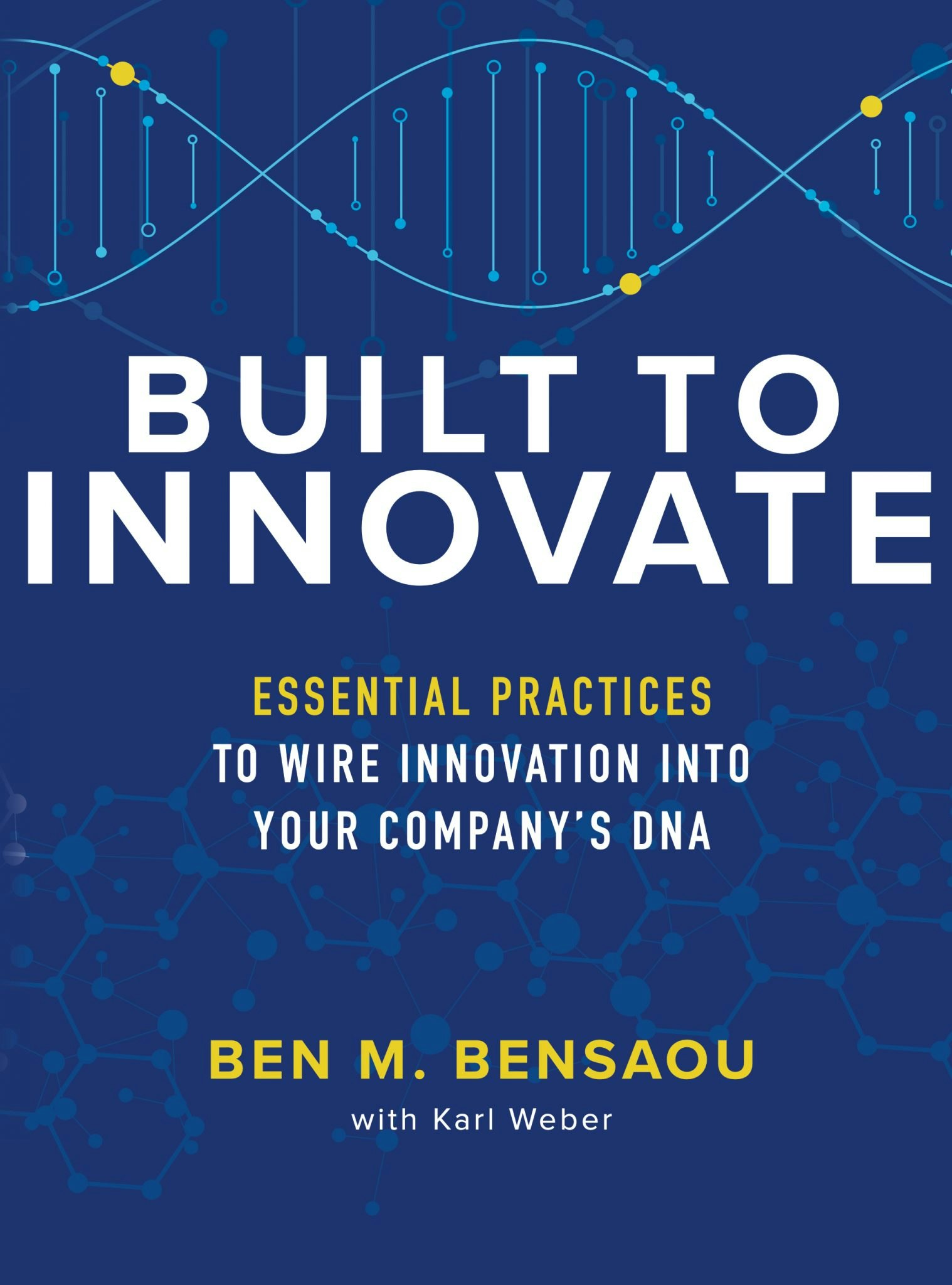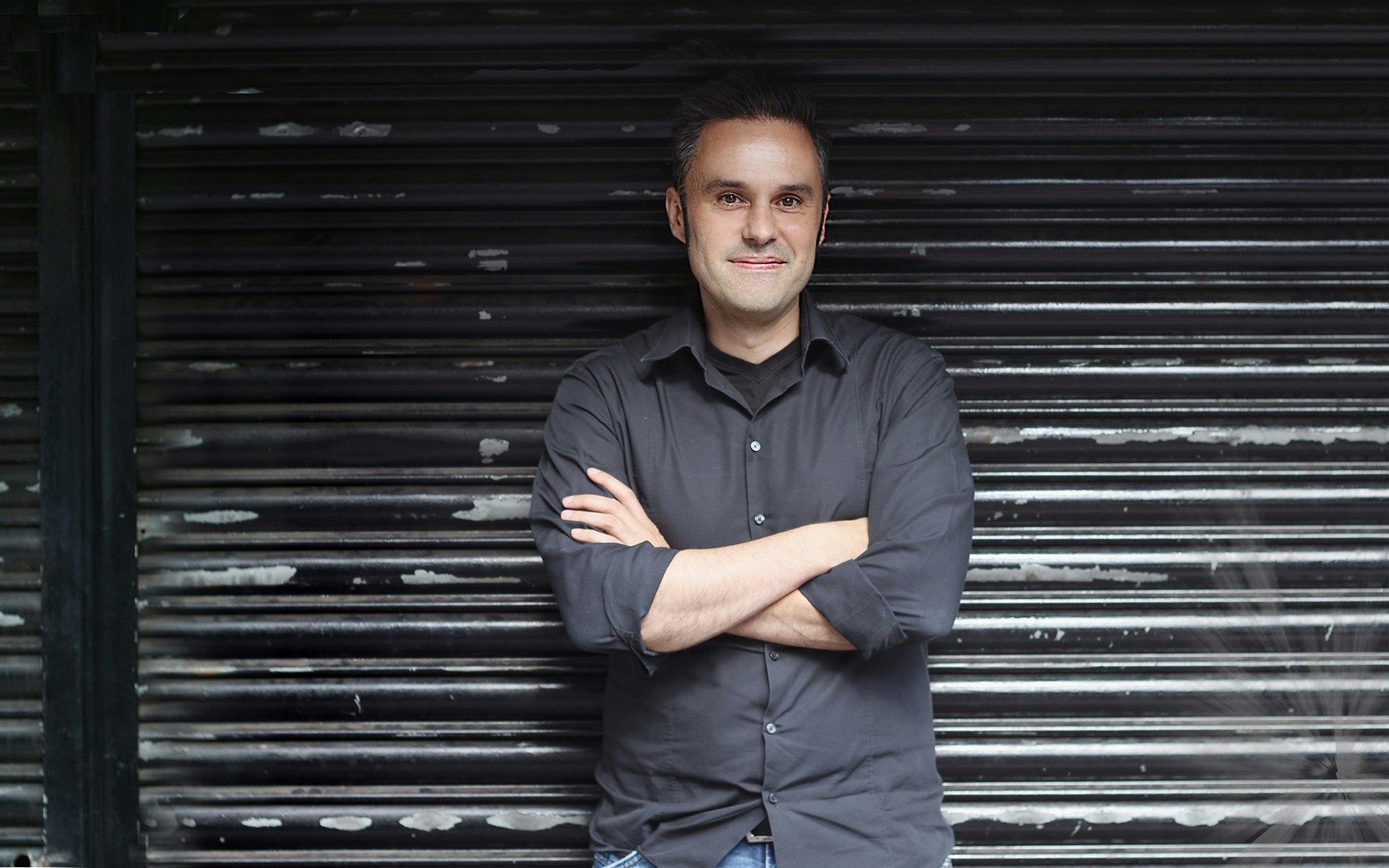"People think you need to have a genius founder or be a start-up to innovate. Not true. I have found that established, even centuries-old companies are able to innovate," says Ben Bensaou, Insead professor of technology management. "How? They don't look for huge, industry-changing effects, but small and important changes in unexpected places."
In order to find these, companies need a culture of continuous innovation, driven by everyone in the organisation. It is something every company can implement, and Bensaou has just published a new book, Built to Innovate, to teach them how.
"As an educator and consultant, I have helped many companies embed continuous innovation throughout their organization using a systematic approach that I have developed, refined, and tested over the years. In Built to Innovate, I codify these concepts and methodology for a wider audience," he says.
Bensaou gave Sifted a few highlights from the book:
The premise of your book is that the innovation conversation has focused too much on individual leaders like Steve Jobs and Jeff Bezos. Why is that a problem?
We have learned a lot about innovation from genius founders like Steve Jobs and Jeff Bezos. I've noticed, however, that too much focus on naturally talented or specialist innovators or on the pressure to produce the next disruptive idea creates anxiety and stress among employees and their managers.
Instead, we should shift the focus away from the anticipated outcome (i.e., innovation, seen as a product or a technology) and from a search for people with 'creative talent', and focus rather on the process of innovating (seen as a set of practical activities, a behaviour, and an attitude) and on training people to acquire new skills and techniques. This is the key to leveraging the innovating potential of everyone in the organization.
The book details the day-to-day practices of a large number of companies. Was there a common theme among the companies that you featured? Were there certain things that all these companies do similarly?
While it is clear that the actual methods, tools, and processes for carrying on the transformation task were different for different companies, they all built a set of concrete structures to promote innovating.
[Successful companies] all built a set of concrete structures to promote innovating.
These include features such as an innovation committee at the board level formally responsible for innovation; a formal internal unit that takes on the job of training a large number of innovation coaches activated at the local level; a network of local innovation coordinators who help winnow, select, and channel innovation ideas to the innovation committee; a formal physical or digital space to bring potential innovators closer to customers and their problems; and processes such as the creation, integration, and reframing key innovating processes described in Built to Innovate.

Take Ecocem, for instance, a small but rapidly-growing cement maker based on an underused innovation, a variant formula for making cement that incorporates GGBS (ground granulated blast furnace slag, a by-product of steel manufacture), which produces a high-quality cement substitute with a much smaller carbon footprint. The manufacture of GGBS also emits virtually no toxic pollutants, and the concrete that incorporates it is especially strong and durable. Donal O'Riain, Irish entrepreneur and founder of Ecocem, created a unique partnership teaming up his salespeople and technology experts with Ecocem's customers. This was the kind of win/win/win solution that went a long way toward overcoming one of the big barriers many companies face when they seek to understand customer needs—namely, the isolation of would-be business innovators from the customers they seek to serve.
What surprised you the most when writing this book?
I found that middle managers are a vital part of innovation. Without them, the potential innovation is lost. Yet they are often overlooked. Senior leaders face an increasingly volatile and uncertain business environment, and they naturally recognize the urgency to implement continuous innovation.
Middle managers are a vital part of innovation.
Frontline managers and employees face customers and noncustomers on a daily basis, and they also fully grasp the importance of innovation. The ones who are somewhat shielded from this direct pressure are middle managers, who are typically focused on executing today's strategy. They are not necessarily convinced about the urgency of innovation; they don't know how to train or coach their own teams, and they simply don't have the time and resources to support innovating by their teams. In addition, they are not incentivized on the innovation contribution of their teams.
By contrast, I saw at Allianz, the German financial giant, how top corporate leaders invested time and energy to build structures and processes to convince, support, and incentivize middle managers to stimulate their own people to innovate.
Allianz built structures and processes to convince, support, and incentivize middle managers to innovate.
Werner Zedelius was the member of the board of directors at Allianz responsible for innovation. Under his leadership, Allianz trained waves of middle managers in innovation concepts and techniques. Then, to support these middle managers, Allianz created an internal program called i2S (Ideas to Success) with a network of, at first, 72 local innovation managers in 37 countries who took on the jobs of coaching frontline employees in innovation techniques, selecting the best ideas, and following individual initiatives to successful implementation. These local innovation managers represented Allianz's first phase of creating a cadre of managers who could systematize the practice of innovating and support frontline workers in their efforts to generate and develop new ideas.
To incentivize middle managers, Allianz UK, for instance, publishes an innovation league table on a regular basis that shows the relative performance of each division within the UK operation. Naturally, no middle manager wants to be seen at the lower end of the scale, so it tends to have a positive effect in terms of motivating leaders. This system helped keep Allianz's middle managers excited and engaged in the innovating process.
If you had to pick the three most important lessons from all the case studies you looked at, what would they be?
Here are three key lessons for each of the three key organizational roles in nurturing an organization built to innovate:
Spend time listening empathetically to customers and noncustomers. Be in listen mode, not sell mode!
- Number #1, my advice to CEO's and senior leaders is to give everybody permission to innovate, pay close attention to middle managers, give them innovation training, create an internal innovation training and coaching unit to support them, and incentivize them based on their team's innovation contribution.
- Number #2, my advice to middle managers is to create space and time for people to get regularly and systematically involved in some form of innovation activity. Send them for innovation training, encourage them, and help them connect with other innovators across the organization.
- Number #3, my advice to front-line managers and employees is to frequently volunteer for and request to participate in any kind of innovation activity, to train and build your innovation muscle. Also, on a regular basis, spend time listening empathetically to customers and noncustomers. I know it is not easy, but when you are in innovating mode, try not to sell them something. Be in listen mode, not sell mode!
What are companies (even the ones you featured) commonly NOT doing well when it comes to innovation?
Many companies still have difficulties creating a culture where failure during innovation does not create a stigma.
Kordsa exempts news business from the corporation's usual profit requirements for their first five years.
Kordsa, the Turkish supplier of fabric used to reinforce tires, was a good example of an effort to stimulate innovation and learning. To protect a promising innovative concept from excessive economic pressures that could squelch it in its early phases, the Kordsa stage-gate idea selection process "positively discriminates" in favour of new businesses by exempting them from the corporation's usual profit requirements for their first five years. This gives the fledgling businesses a chance to grow to scale while any flaws in the profit model are being identified and eliminated.


